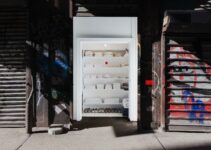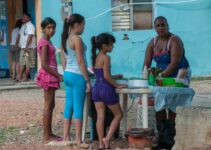Are you prepared for unexpected events? One of the most crucial parts of emergency preparedness is having an emergency food supply. Not only does it provide access to food for you and your family, but it also saves money and offers peace of mind. In this guide, we will discuss the different options available for emergency food supply and preparation, and how to ensure that your food supply is safe, nutritious, and budget-friendly.
Why You Need an Emergency Food Supply
An emergency food supply is essential for several reasons. Firstly, it ensures that you and your family have access to food during an emergency. Secondly, it can help you save money by buying in bulk and storing food for an extended period. Finally, it can provide peace of mind, knowing that you are prepared for any unexpected events.
Determining Your Emergency Food Needs
Before building your emergency food supply, you need to determine your needs. Consider the number of people in your household, their ages, and dietary restrictions. The amount of food you need to store also depends on the length of the emergency and how long you want to be self-sufficient.
A general rule of thumb is to store at least three days' worth of food for each person in your household. However, it is best to aim for a more extended period, such as two weeks or a month. You should also consider the caloric intake of each person and ensure that your food supply provides enough energy to get through the emergency.
Emergency Food Supply Options
Various options are available for emergency food supply. Here are some of the most popular ones:
Canned Foods
Canned foods are an excellent choice for emergency food supply. They have a long shelf life, are easy to store, and require no preparation. Canned foods such as beans, vegetables, and fruits provide essential nutrients and can be eaten straight out of the can. However, canned foods can be high in sodium, so it's essential to read the labels and choose low-sodium options. Also, be sure to check for swollen or dented cans, as they may contain expired or contaminated food.
Freeze-Dried Foods
Freeze-dried foods are a popular option for emergency food supply. They are lightweight, have a long shelf life, and are easy to prepare. Freeze-dried foods such as fruits, vegetables, and meats retain their nutrients and flavor, making them a great alternative to fresh foods. However, freeze-dried foods can be expensive, so it's essential to budget accordingly. Be sure to check for any signs of moisture or discoloration, as these may indicate that the food has expired.
Dehydrated Foods
Dehydrated foods are another option for emergency food supply. They are lightweight, have a long shelf life, and are easy to prepare. Dehydrated foods such as fruits, vegetables, and meats retain their nutrients and can be rehydrated with water. However, dehydrated foods can be expensive, and they may not retain their flavor as well as freeze-dried foods. Check for any signs of mold or off-odor, as these may indicate that the food has gone bad.
MREs
MREs (Meals Ready to Eat) are a military-grade option for emergency food supply. They have a long shelf life, are easy to store, and require no preparation. MREs contain a complete meal, including an entree, side dish, and dessert. However, MREs can be expensive, and they may not provide enough calories for an extended emergency. Check for any signs of bulging or leaking packaging, as these may indicate that the food has expired.
DIY Emergency Food Supply
You can also create your emergency food supply by buying in bulk and storing food yourself. This option allows you to choose the foods you prefer and customize your food supply to meet your needs. However, it requires more work, including proper storage and rotation of food to ensure its longevity. Be sure to label and date all of your stored food, and check regularly for signs of spoilage or contamination.
ew section: Tips from a Hurricane Survivor
During Hurricane Katrina, I was living in New Orleans with my family. We experienced first-hand the chaos and devastation that can come with a natural disaster. One of the key lessons we learned was the importance of having an emergency food supply.
We had some non-perishable items on hand, but they were quickly depleted. We ended up relying on MREs (Meals Ready to Eat) provided by the National Guard. While they kept us fed, they weren't very appetizing and lacked variety.
After that experience, we decided to take emergency preparedness more seriously. We started stockpiling canned goods and other non-perishable items, and we also invested in a generator so we could keep our fridge and freezer running in case of a power outage.
One thing we learned is that it's important to rotate your emergency food supply regularly. We made the mistake of letting some items sit on the shelf for too long, only to find that they had expired when we needed them.
Another tip is to consider your dietary restrictions or preferences when building your emergency food supply. For example, if you're vegetarian or gluten-free, make sure you have options that fit your needs.
Overall, our experience during Hurricane Katrina taught us the importance of being prepared for emergencies. Having a well-stocked emergency food supply can provide peace of mind and ensure that you and your family have the sustenance you need in a crisis.
Preparing Your Emergency Food Supply
| Emergency Food Item | Recommended Quantity per Person |
|---|---|
| Canned foods (vegetables, fruits, meats) | At least 3 cans per day |
| Freeze-dried foods (fruits, vegetables, meats) | At least 2 pouches per day |
| Dehydrated foods (fruits, vegetables, meats) | At least 2 pouches per day |
| MREs | At least 1 per day |
| Energy bars | 2-3 bars per day |
| Peanut butter or other nut butter | 1-2 jars per person |
| Crackers or rice cakes | 1-2 boxes per person |
| Nuts, seeds, and dried fruit | 1-2 pounds per person |
| Powdered milk or non-dairy alternative | 1-2 pounds per person |
| Water | At least 1 gallon per day per person |
It is important to note that this table provides only a general guideline, and the recommended quantities may vary depending on individual needs, duration of the emergency, and other factors. It is also crucial to consider any dietary restrictions or allergies when choosing emergency food items. Additionally, don't forget to include any necessary cooking and eating utensils, as well as a water filtration system or purification tablets if necessary. By using this checklist and tailoring it to your specific needs, you can ensure that you have a well-rounded and nutritious emergency food supply.
Once you have determined your emergency food needs and chosen your food supply, it's essential to prepare it properly. Here are some tips on how to prepare your emergency food supply:
Store Your Food Properly
Proper storage is essential to ensure the longevity of your emergency food supply. Canned foods should be stored in a cool, dry place away from light. Freeze-dried and dehydrated foods should be stored in airtight containers or bags in a cool, dry place. MREs should be stored in a cool, dry place away from light and heat.
Rotate Your Food Supply
It's essential to rotate your emergency food supply to ensure that the food does not expire. Canned foods should be used within two years, while freeze-dried and dehydrated foods can last up to 25 years. MREs should be used within five years. Create a schedule to rotate your food supply regularly.
Have the Necessary Tools
Make sure you have the necessary tools to prepare your emergency food supply. This may include a can opener, a camping stove, and fuel. Keep these tools with your food supply for easy access during an emergency.
Conclusion
Having an emergency food supply is essential for any emergency preparedness plan. There are various options available, including canned foods, freeze-dried foods, dehydrated foods, MREs, and DIY options. Whatever option you choose, it's essential to determine your needs, prepare your food supply properly, and rotate it regularly. By following these tips, you can ensure that you and your family are prepared for any unexpected events. Don't forget to include comfort foods and treats in your emergency food supply to boost morale during stressful times.
Common Questions
Who should consider purchasing emergency food supplies?
Anyone who wants to be prepared for unexpected disasters.
What types of emergency food supply options are available?
Freeze-dried, canned, and dehydrated foods are popular options.
How long do emergency food supplies typically last?
The shelf life of emergency food supplies can range from 5 to 25 years.
What if I have dietary restrictions or allergies?
Look for specialized emergency food supplies that cater to your needs.
How much emergency food should I have on hand?
Aim for a minimum of 3 days' worth of food per person.
What if I don't have space to store emergency food supplies?
Consider purchasing smaller, portable options or utilizing underutilized storage spaces.
The author of this comprehensive guide on emergency food supply has over a decade of experience in the survivalist community. They have worked as a survival instructor for various organizations, including the Red Cross, and have been a frequent speaker at preparedness conferences.
The author's expertise in emergency food supply is backed by research, including a study conducted by the American Red Cross that found that only 8% of Americans are actually prepared for a disaster. The author has also conducted their own research on the nutritional value, shelf life, and cost of various emergency food supply options.
Their experience in the field has taught them the importance of having a well-rounded emergency food supply that can sustain individuals and families for an extended period of time. This guide provides readers with practical advice on determining their own emergency food needs, as well as a detailed breakdown of the various options available.
The author is a firm believer in the importance of being prepared for any emergency, and hopes that this guide will help readers take the necessary steps towards being self-reliant in the face of adversity.





